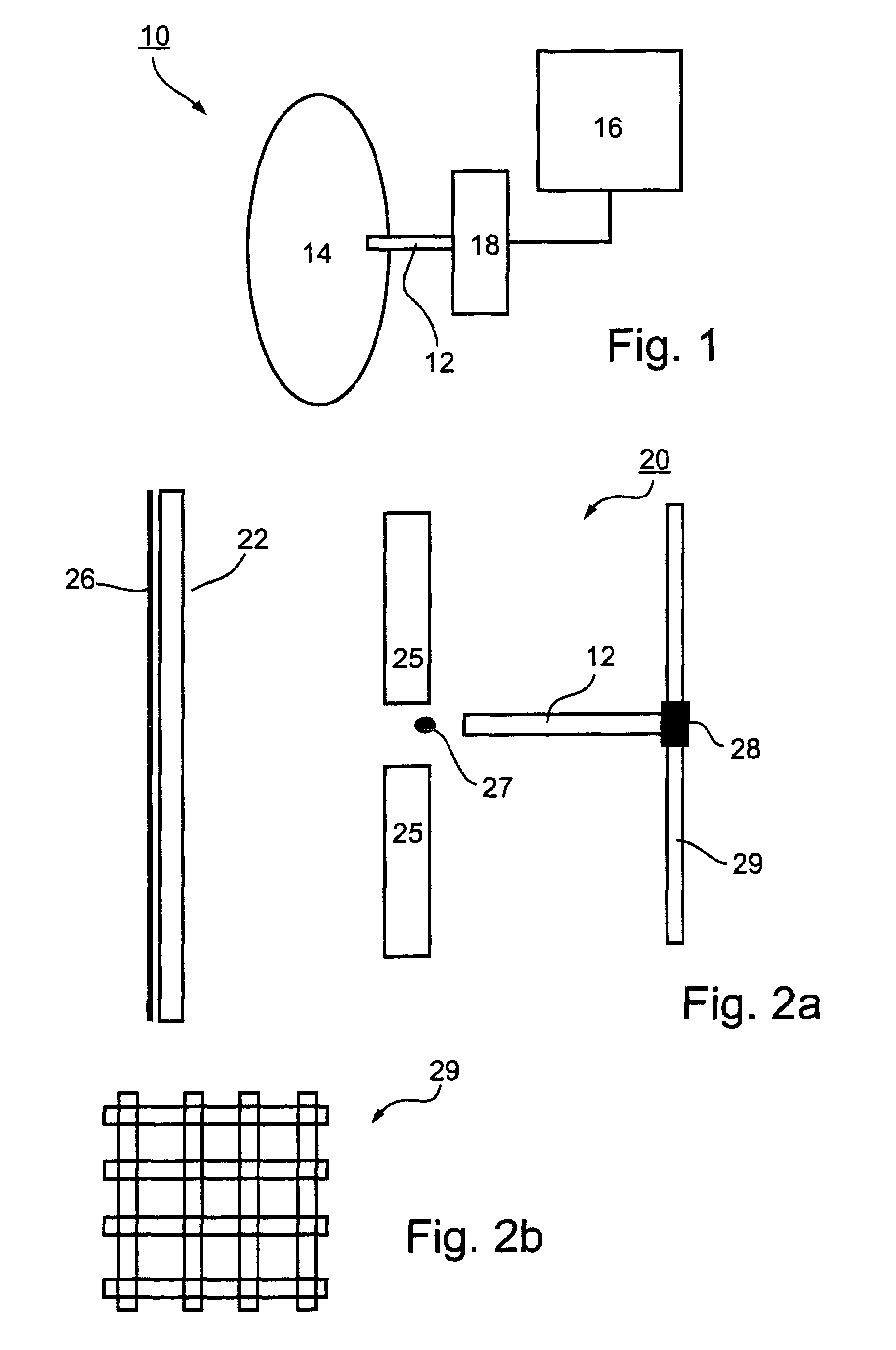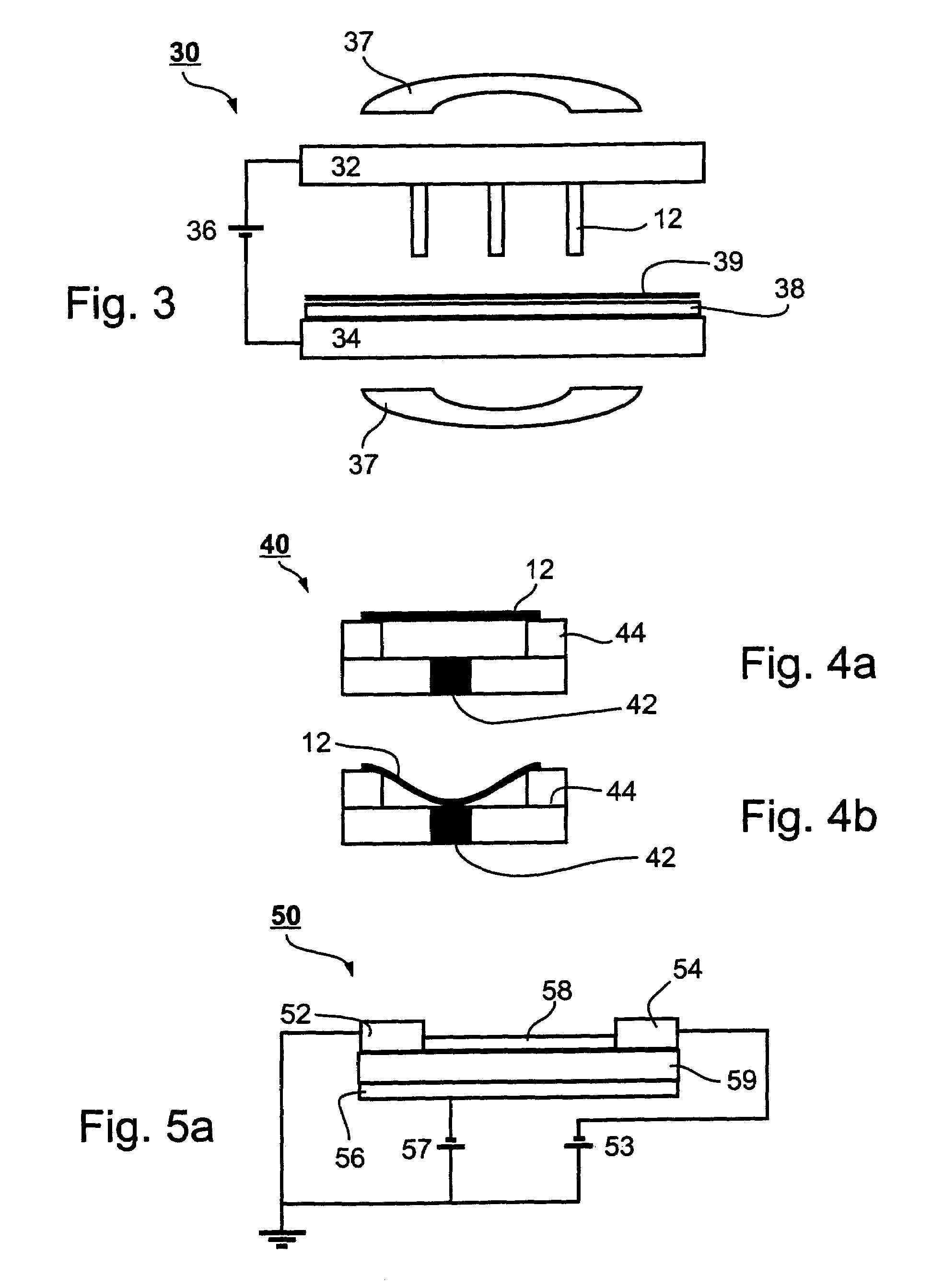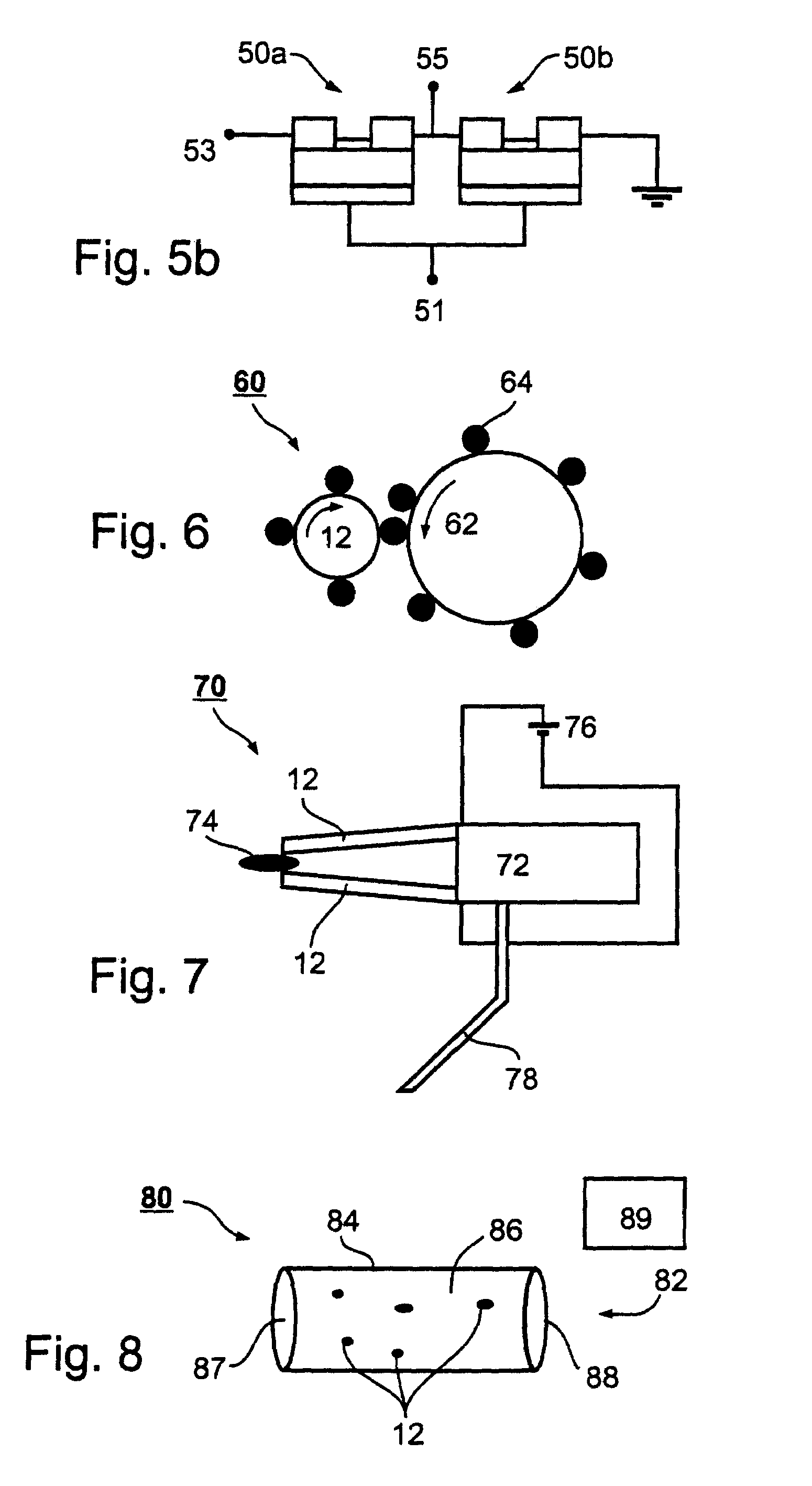Peptide nanostructures and methods of generating and using the same
a technology of peptide nanotubes and nanostructures, which is applied in the direction of peptides, peptide/protein ingredients, peptide sources, etc., can solve the problems of large structural limitations of carbon nanotubes produced to date, spatial structures with unpredictable electronic, molecular and structural properties, modification and functionalization,
- Summary
- Abstract
- Description
- Claims
- Application Information
AI Technical Summary
Benefits of technology
Problems solved by technology
Method used
Image
Examples
example 1
Nanotubes Self-Assembly of Alzheimer's β-Amyloid Core Recognition Element
[0268]Materials and Experimental Procedures
[0269]Material—Peptides (NH2-Phe-Phe-COOH, SEQ ID NO: 1) were purchased from Bachem (Budendorf, Switzerland). Freshly prepared stock solution was prepared by dissolving lyophilized form of the peptide in 1,1,1,3,3,3,-Hexafluoro-2-propanol at a concentration of 100 mg / ml. To avoid any pre-aggregation, fresh stock solution were prepared for each experiment.
[0270]Transmission Electron microscopy (TEM)—Peptide stock solution was diluted to a final concentration of 2 mg / ml in double distilled water, then a 10 μl aliquot of the peptide suspension was placed on a 200 mesh copper grid, covered with carbon stabilized formvar film. Following 1 minute, excess fluid was removed and the grid was negatively stained with 2% uranyl acetate in water. Following 2 minutes of staining, excess fluid was removed from the grid. Samples were viewed in JEOL 1200EX electron microscope operating...
example 2
Formation of Fullerene-Like Closed-Cage Structures by Self-Assembly of Aromatic Dipeptides
[0287]Materials and Experimental Procedures
[0288]Materials—The diphenylalanine and diphenylglycine peptides were purchase from Bachen (Bubendorf, Switzerland, SEQ ID NOs: 1 and 6, respectively). The CFF peptide was purchase from SynPep (Dublin Calif., USA). Fresh stock solutions of the diphenylalanine and the diphenylglycine were prepared by dissolving lyophilized form of the peptides in 1,1,1,3,3,3-hexafluoro-2-propanol (HFP, Sigma) at a concentration of 100 mg / ml.
[0289]The CFF peptide was prepared by dissolving lyophilized form of the peptide in HFP and 25% dithiothreitol, 1 M in ddH20 to a final concentration of 25 mg\ml. To avoid any pre-aggregation, fresh stock solutions were prepared for each experiment. The peptides stock solutions were diluted into a final concentration of 2 mg / ml in double distilled water.
[0290]Chemical Modification of an Amine to a Thiol—The diphenylalnine peptide was...
example 3
Formation of Tubular Nanostructures by Self-Assembly of Polyphenylalanine Peptide
[0308]The ability of polyphenylalanine peptides of 50-136 amino acids to self assemble into discrete nanotubes was examined.
[0309]Materials and Experimental Procedures
[0310]Materials—The Polyphenylalanine peptide was purchase from Sigma-Aldrich. Fresh stock solution was prepared by dissolving lyophilized form of the peptide in dichloroacetic acid at a concentration of 5 mg / ml and was incubated for an hour in a water bath pre heated to 85° C. To avoid any pre-aggregation, fresh stock solutions were prepared for each experiment. The peptide stock solution was diluted into double-distilled water to a final concentration of 2.5 mg / ml.
[0311]Scanning electron microscopy—A 30 μl suspension of 1 day aged peptide solution was dried at room temperature on a microscope glass cover slip and coated with gold. Scanning electron microscopy images were made using a JSM JEOL 6300 SEM operating at 20 kV,
[0312]Congo red (...
PUM
| Property | Measurement | Unit |
|---|---|---|
| diameter | aaaaa | aaaaa |
| length | aaaaa | aaaaa |
| temperature | aaaaa | aaaaa |
Abstract
Description
Claims
Application Information
 Login to View More
Login to View More - R&D
- Intellectual Property
- Life Sciences
- Materials
- Tech Scout
- Unparalleled Data Quality
- Higher Quality Content
- 60% Fewer Hallucinations
Browse by: Latest US Patents, China's latest patents, Technical Efficacy Thesaurus, Application Domain, Technology Topic, Popular Technical Reports.
© 2025 PatSnap. All rights reserved.Legal|Privacy policy|Modern Slavery Act Transparency Statement|Sitemap|About US| Contact US: help@patsnap.com



